The Stick Shed Experiment
Dear Readers,
It’s been a while! While the silence from us has been seemingly extensive, I promise that we have not been sitting idle. If you check out our “Resources for LBC” page, you’ll see our Embodied Carbon Baseline attempts, some results with our material/product vetting (Toxnot Advocacy Letter, Manufacturer Inquiry Document, and Stone Advocacy Letter), and even a synopsis of our Biophilic Design Workshops. We’ve also been busy helping manufacturers pursue material transparency, with one in particular going full-throttle and asking us to make a Declare Label for them.
We have finished preparing the site for the driveway, septic system, and the home’s footprint. We did attempt to relocate and replant as many wild blueberry bushes, small trees, and moss heaps as we could.

Transplanting Moss
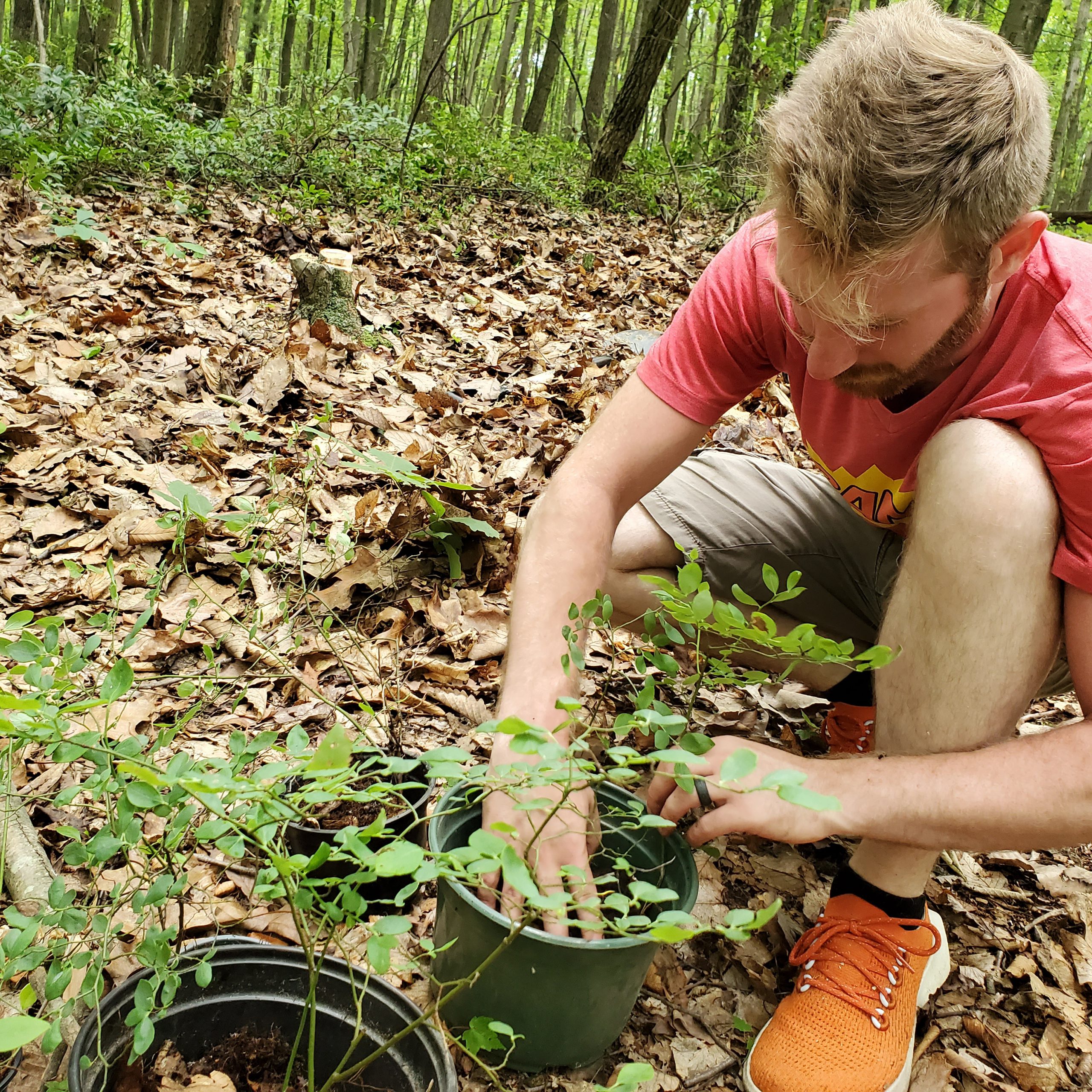
Potting Blueberries to Transplant. Through our transplanting efforts, we did quickly learn that wild blueberries prefer dry, acidic soils. Similar to that in the Land of the Laurels, where mountain laurel and long needle white pine also thrive.
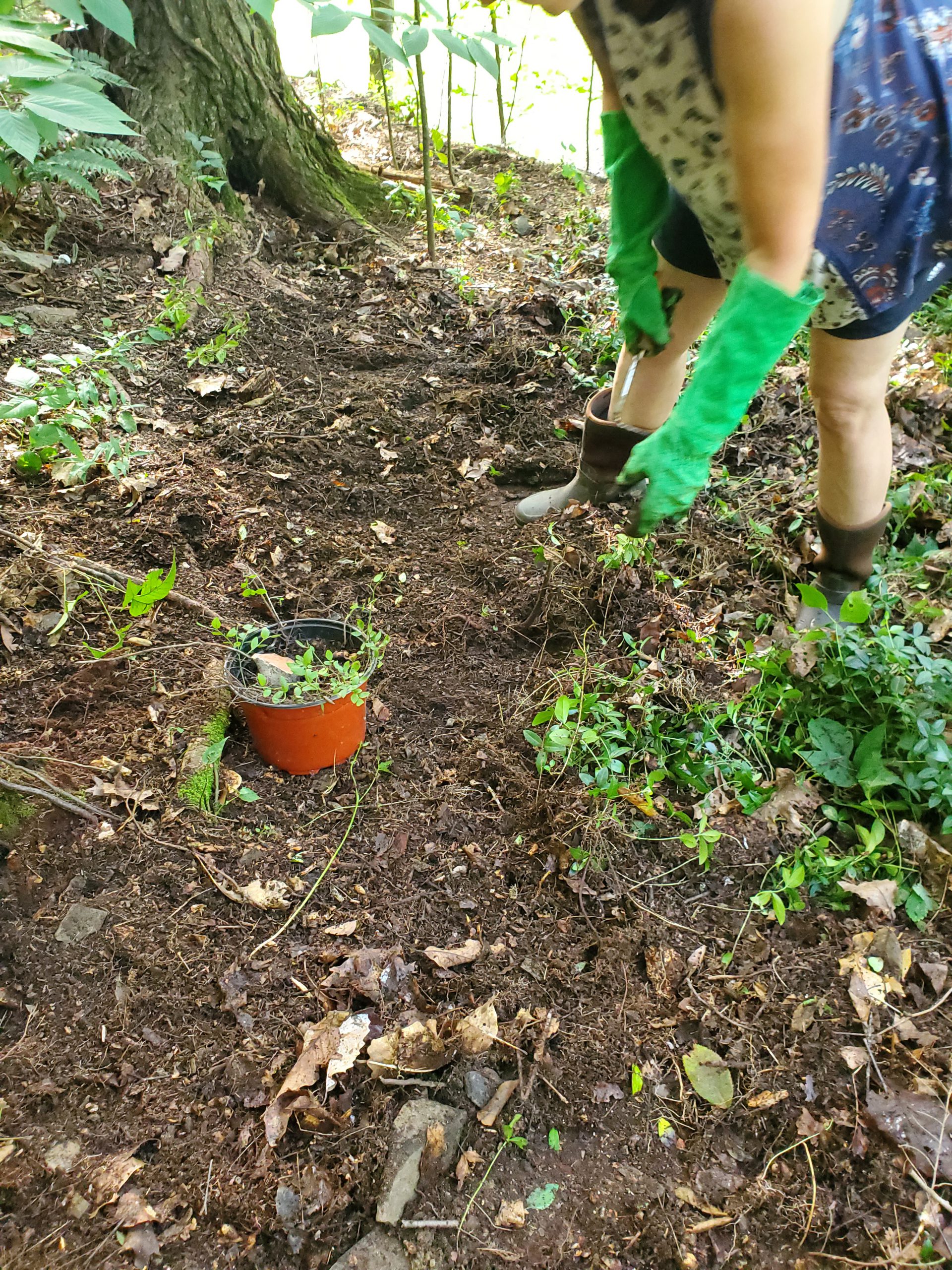
Removing invasive periwinkle to replace with native blueberries from Land of the Laurels.
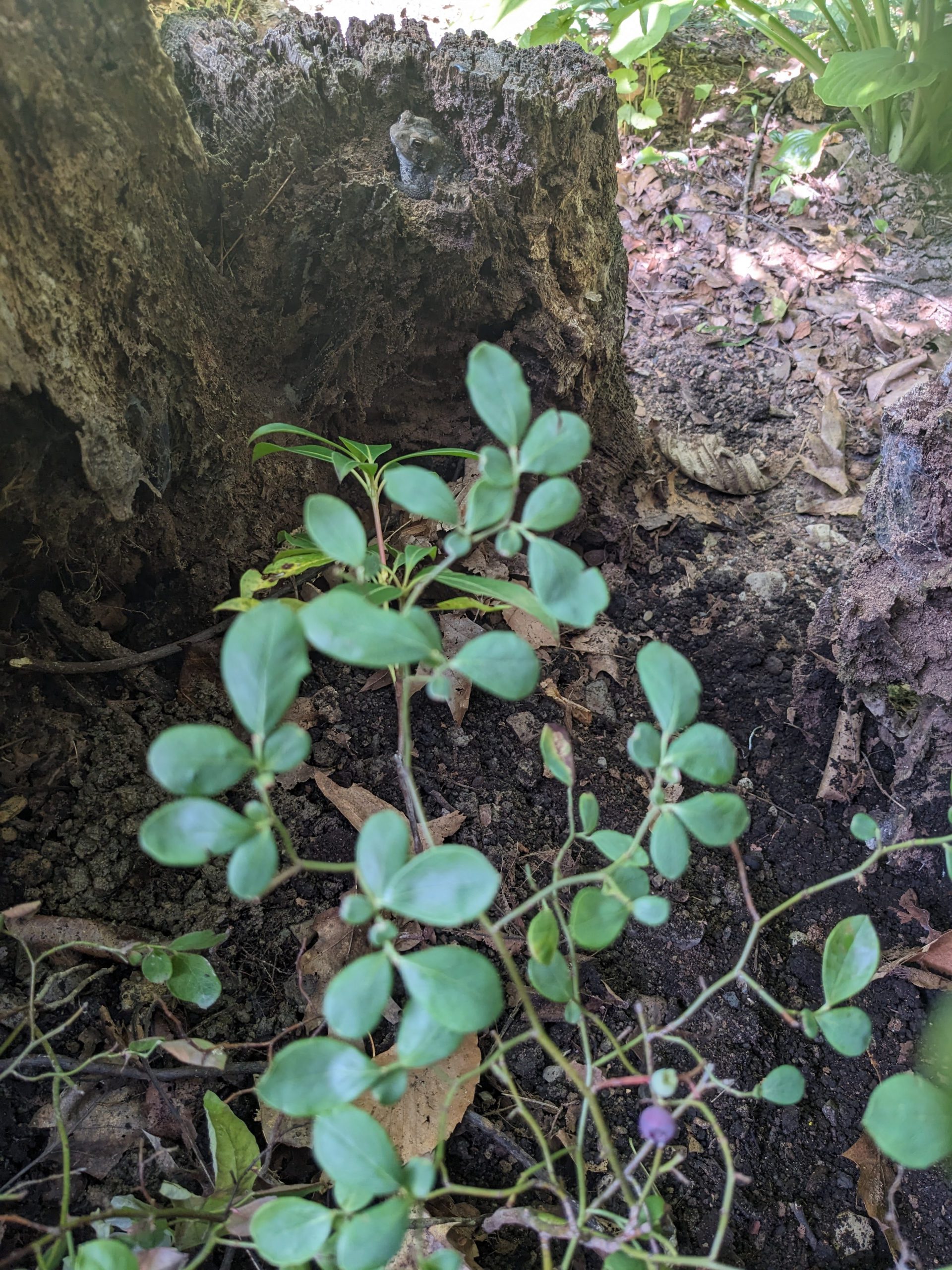
Can you spot the toad assessing our blueberry transplanting endeavors?
Any trees or mountain laurel removed is intended for reuse in the project itself. Larger trees will hopefully be used for the timber frame structure (we are scrapping the CLT idea…blog to follow later), and smaller trees and branches are intended to be used for handrails (I love this guy’s YouTube videos!), and even perhaps siding for our shed…
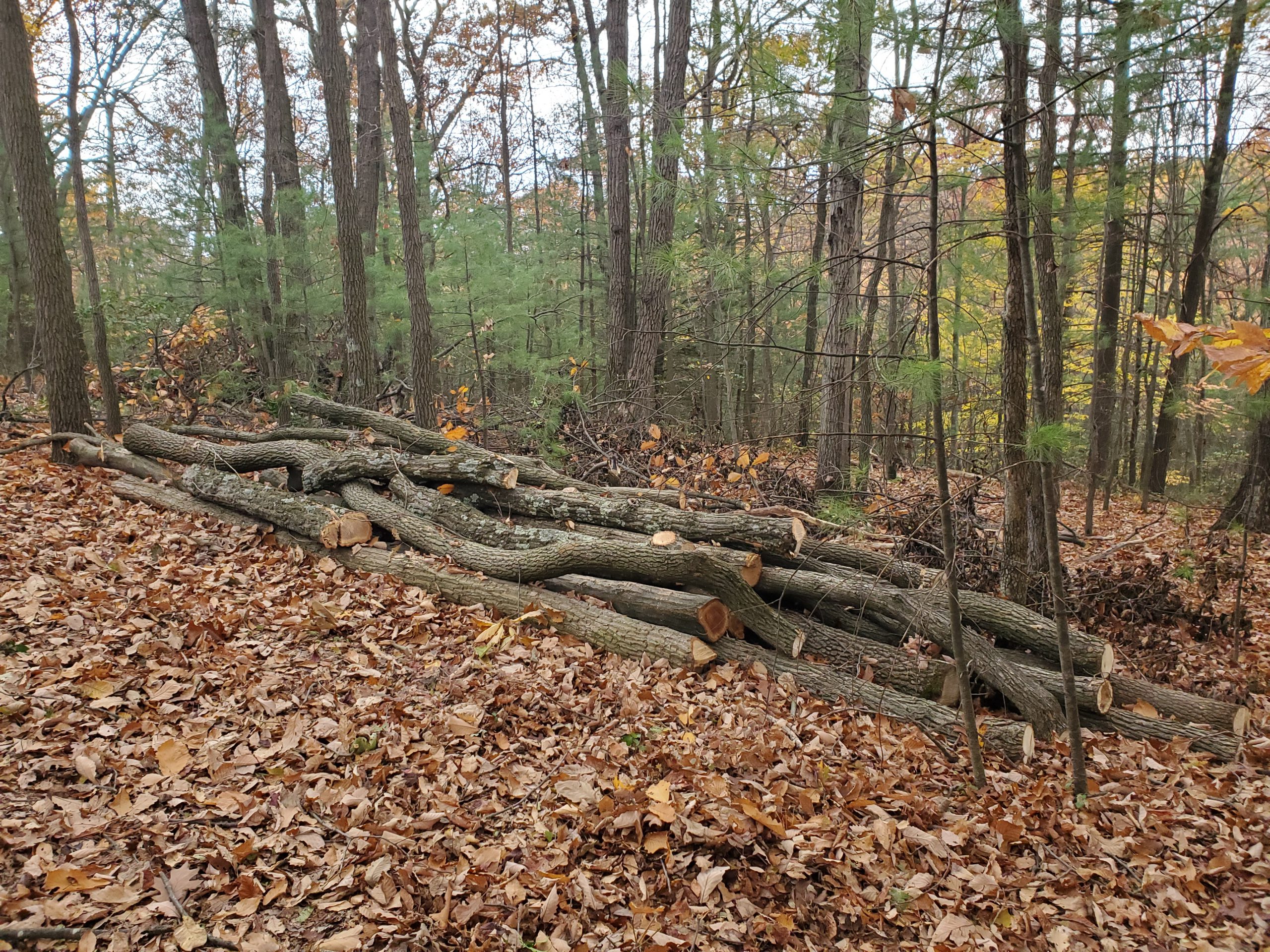
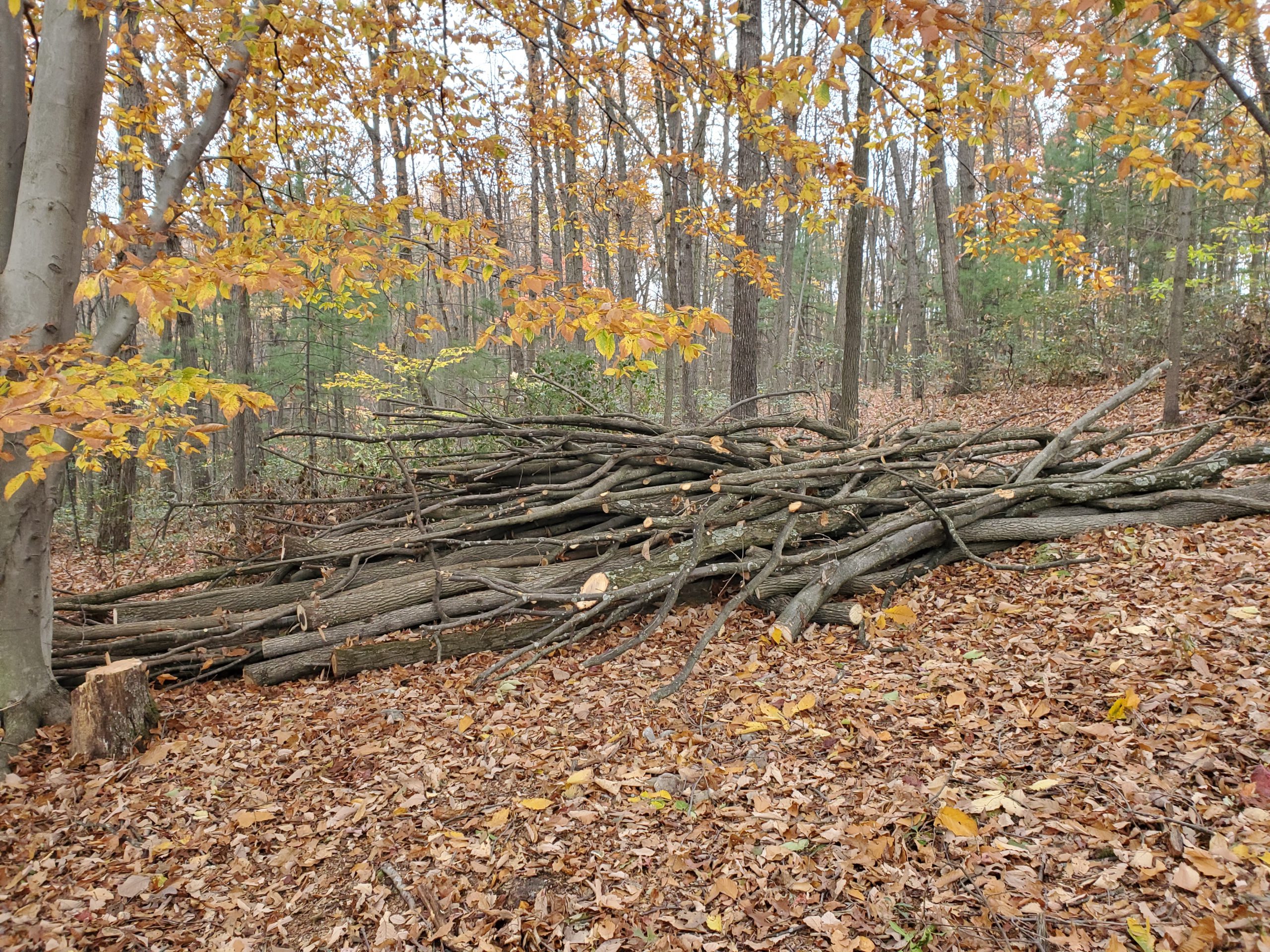
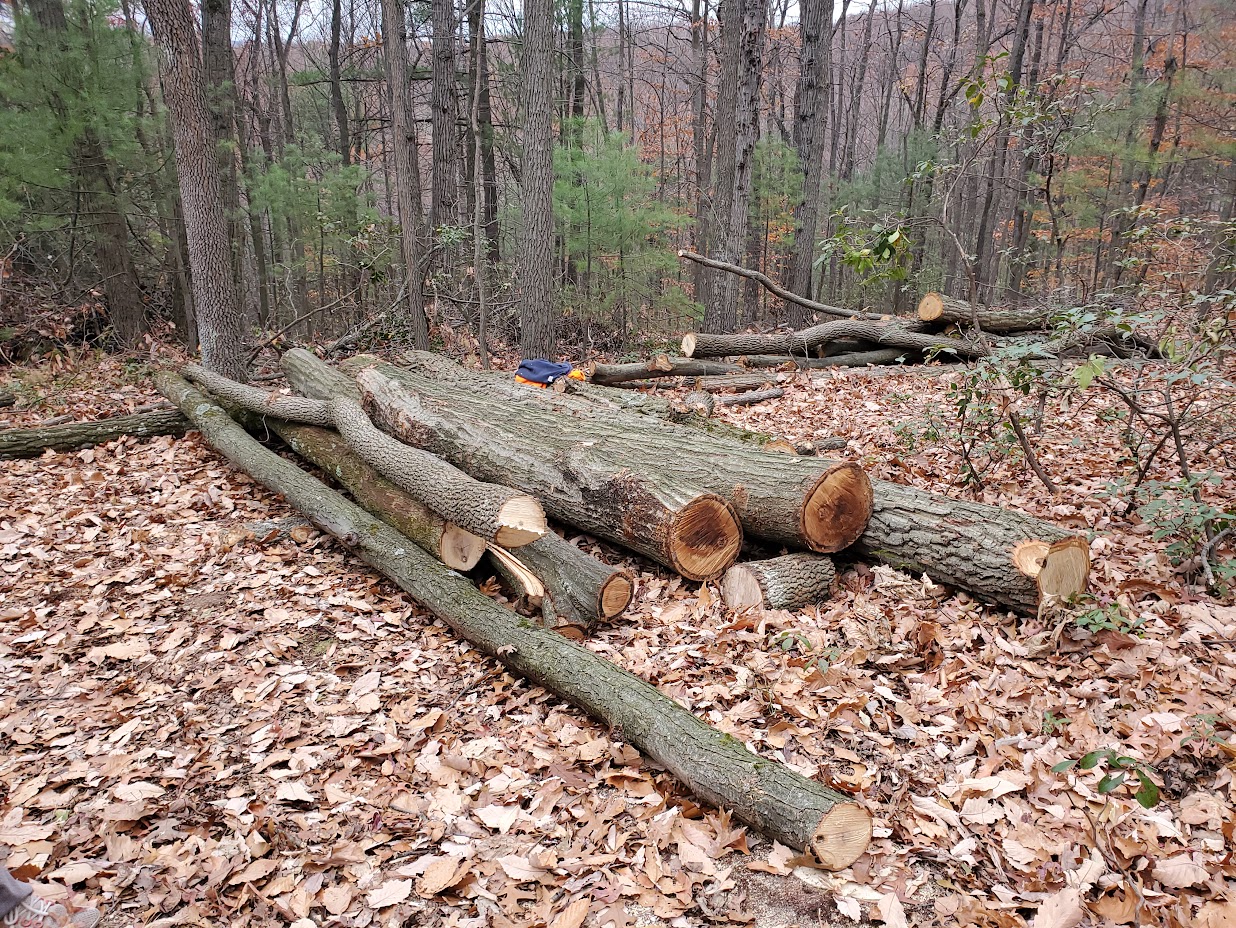
We are due to have the driveway officially complete this spring. Once the driveway is complete, William and I have plans to build a shed to keep all of the building supplies and tools we have thus far collected. We kind of feel like squirrels. We have secret stashes of building materials and tools just about everywhere: in my dad’s garage, next to my dad’s garage, behind my dad’s garage…my poor dad is losing so much of his personal space…my parents’ basement, my truck, our bedroom, and on the site itself. From free toilets to Facebook marketplace sinks to shovels and clippers and chainsaws and nails and wood…we need a place to start keeping all these glorious treasures.
Hence, The Stick Shed:
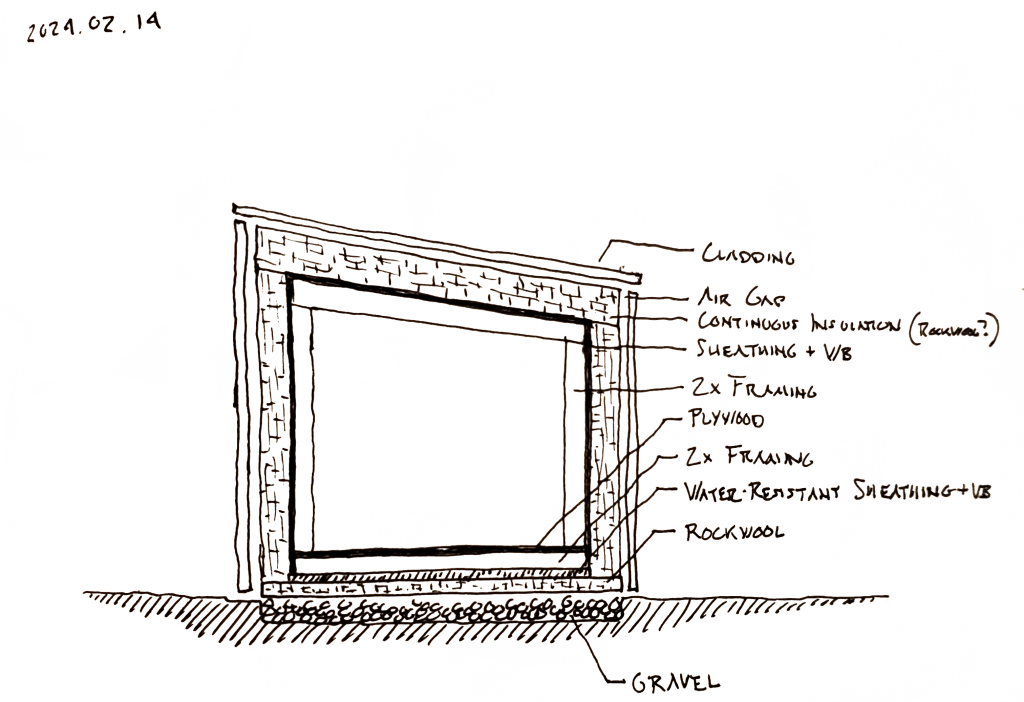
We are attempting to keep all materials that we use for The Stick Shed under the Salvaged/Intentionally Harvested Wood1, Recycled2, Salvaged3, or Surplus Materials4 definitions of the Living Building Challenge. If you look at the footnotes associated with each of those definitions, you are admittedly in for a doozy. Essentially, if we use products/materials within the scopes of those definitions, then our shed will have a lower embodied carbon count (yay, reusing materials!!) and I don’t necessarily *have to* vet those products to the LBC’s Red List (except in certain scenarios-feel free to reach out to me if you want the details on those 😉 ).
The other goal with this shed is to play around with William’s ‘house hug’ idea. If you look at William’s shed sketch, you’ll see that the structure is on the interior of the shed, allowing the exterior to have a continuous envelope of rigid board insulation (that is both vapor open and has the ability to shed bulk water) and a weather resistive air barrier (that is also vapor open). With us intending to build our home to Passive House standards (PHIUS), we need to find a way to attach our insulation and cladding without puncturing through our air barrier. Experimenting on our Stick Shed is the perfect opportunity for William’s House Hug.
In essence, William’s House Hug would have the exterior cladding and the battens underneath act as the means to hold the insulation strongly against the structure. Think of a ratchet strap wrapping around a DIY picture frame to hold the recently glued corners together…where the pressure and weight of the roof and connected siding keep the board insulation in place.
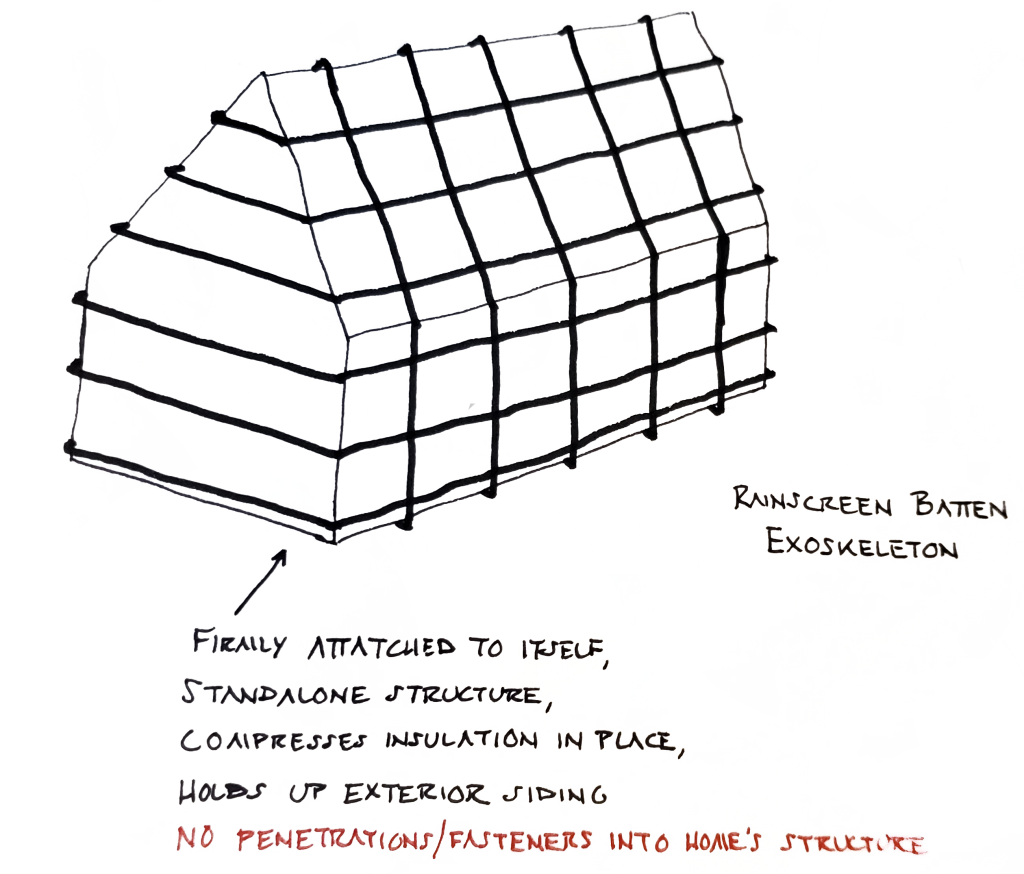
Steep goals. Which become even steeper when you start to consider the ultimate goal of actually building our home.
A couple days ago we began experimenting with the siding of our Stick Shed. Hoping to use parts of the on-site intentionally harvested trees, we are aiming for the siding (and roof!) to be made of sticks. The stick siding was an inspirational conglomerate of Pinterest, modern architectural magazines, YouTube videos, and an utterly hopeful “What If…”
As of now, we have reverse battens made out of leftover 2×4’s that we found lying around William’s Dad’s garage. We used my dad’s table saw to cut the 2×4’s in half. This prototype batten structure is 16” on center from top to bottom, and 24” on center from left to right. With the sticks attached, we happily found that they provided lateral support/shear.
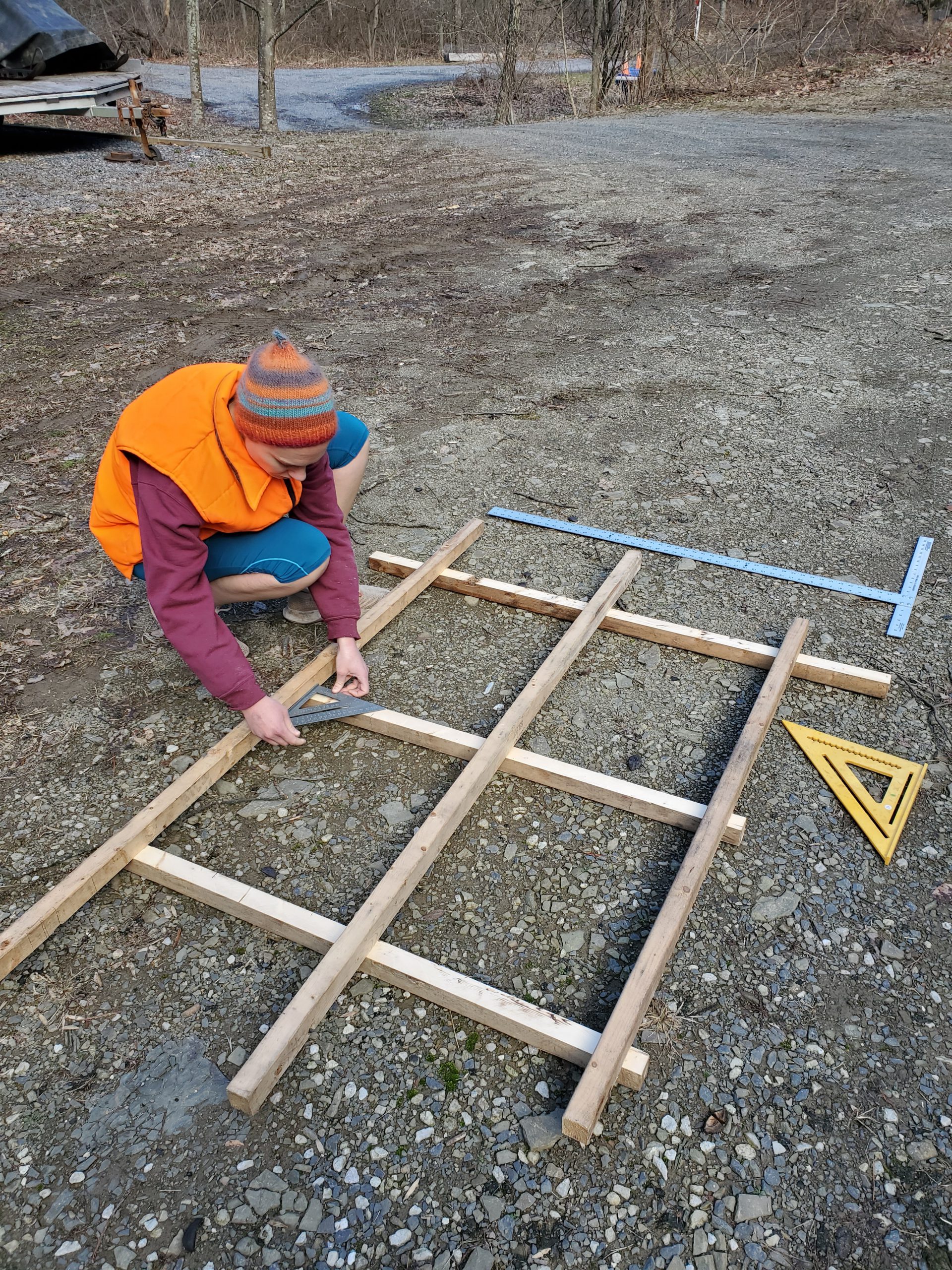
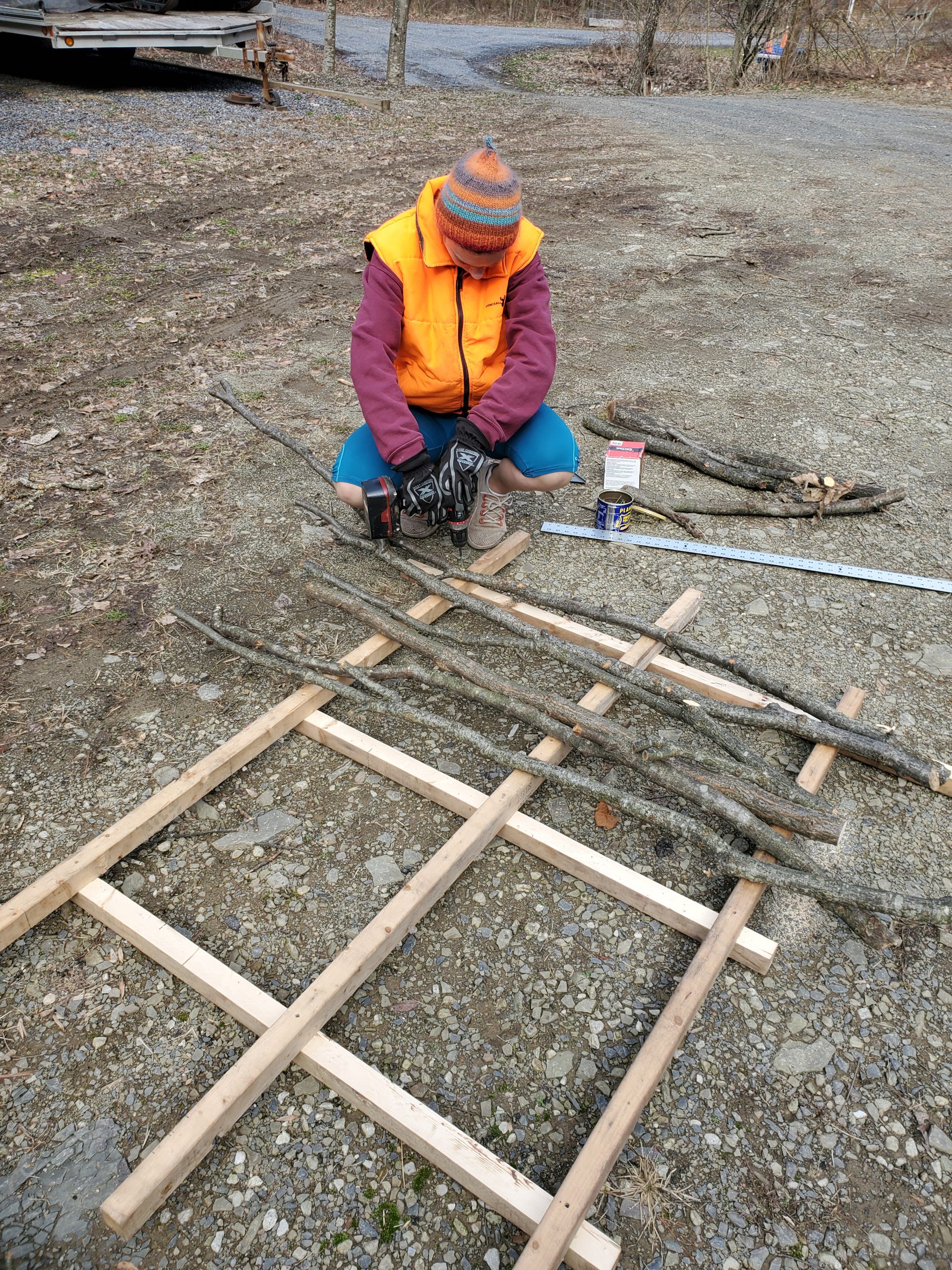
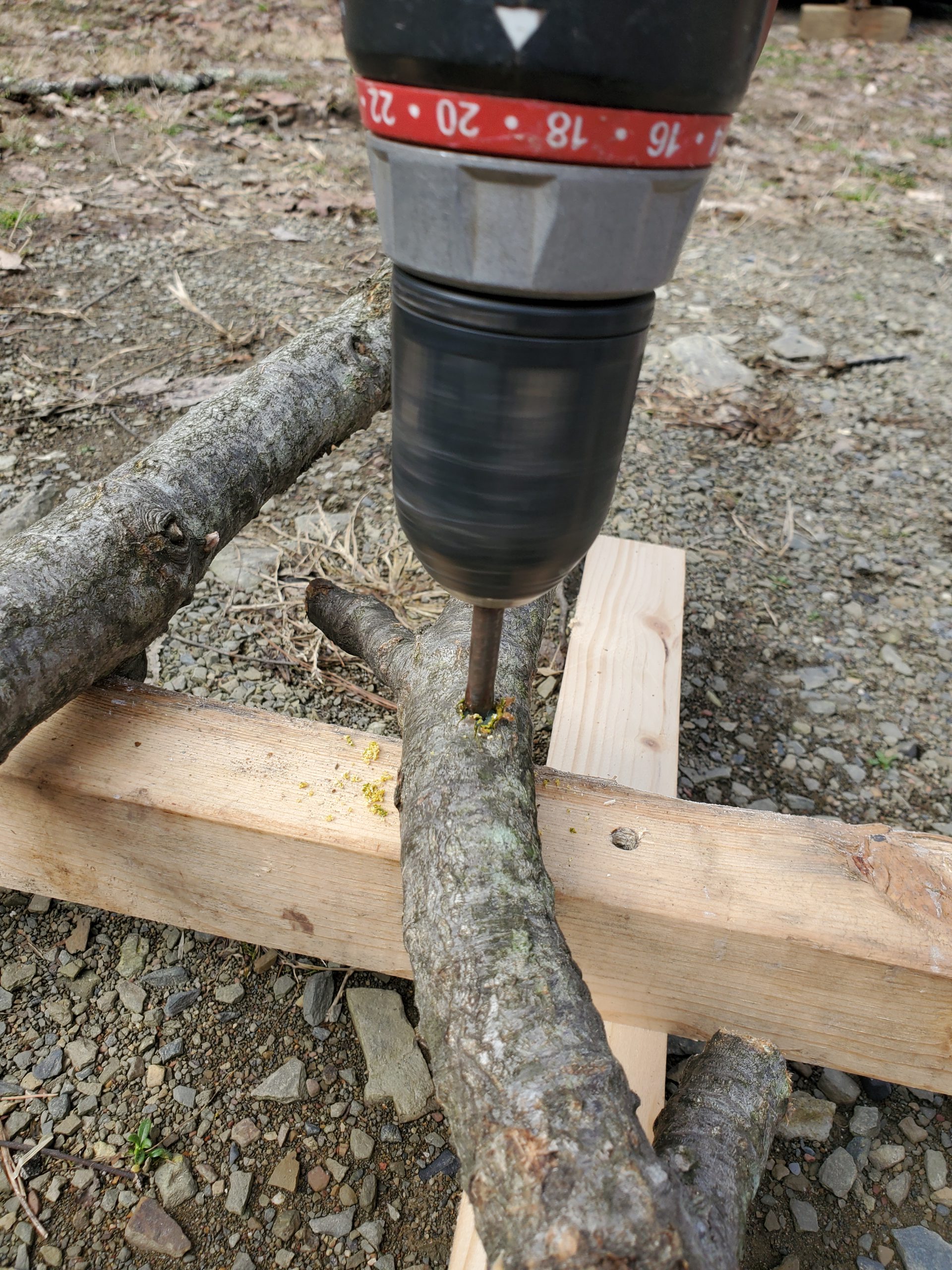
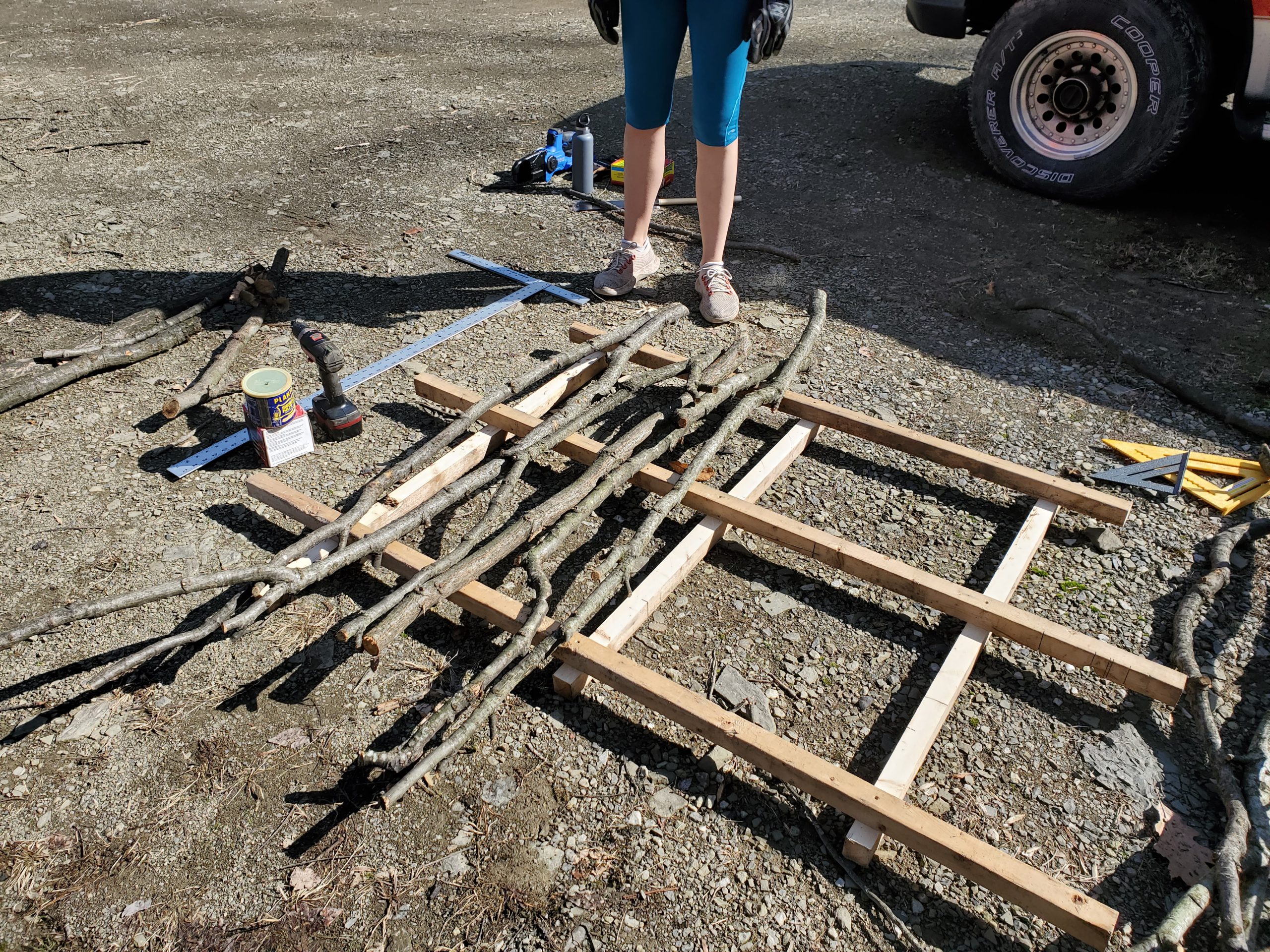
We initially used typical 2” decking screws to attach the sticks to the battens but decided that using nails as we go forward is the better option. We ended up purchasing a Metabo HPT Cordless 18V, 16 Gauge Nailer and 2.5” nails. Until the nail gun arrives, we decided to pause on any further stick attachments and assess some current ideas/concerns:
- Will stacking sticks on top of each other to cover some of the larger gaps be enough to create a rainscreen?
- Will this rainscreen be enough in keeping the rigid board insulation from getting too wet and from UV damage?
Alright, that’s enough for now. That’s plenty of a blog for the first one in almost two years. I’ll communicate further about The Stick Shed if it proves to be interesting.
All for now!
Shelby
1. I14-2 FSC-Certified, Salvaged, and Intentionally Harvested Wood Documentation
• Receipts from the seller/broker of all salvaged wood procurements.
• If intentional on-site harvest occurred: An illustrated narrative documenting both why tree removal either was required for construction or was part of a reforestation/restoration program, and information documenting that the extraction was minimally invasive.
International Living Future Institute, Living Building Challenge 4.0 – 1, Page 346-347.
2. Recycled Content
Products and materials with recycled content are encouraged, but cannot have Red List materials as a primary ingredient or create a secondary market for Red List materials. Unknown residuals in recycled content are considered unintentional trace amounts and all allowed to be present in the product. Thorough reporting of all known ingredients, including pre-consumer recycled content, generated by the manufacturer, is required. Pre-consumer recycled content from the manufacturer’s own feedstock may not use the unintentional trace amounts clarification. International Living Future Institute, Living Building Challenge 4.0 – 1, Page 313.
3. Salvaged Materials
Like recycled materials, salvaged materials are encouraged, but cannot have Red List materials as a primary ingredient or create a secondary market for Red List materials. Due to the nature of salvaged materials, full ingredient disclosure may not be available. A salvaged material with a suspected Red List ingredient can be used if the suspected ingredient meets the following criteria:
• Unintentionally added to the product due to its presence in recycled feedstock
• Not a primary ingredient
• Not necessary in the final product
Salvaged products do not require full ingredient reporting to 100 ppm. Instead, project teams must report the source of salvaged products and list all known ingredients and all suspected primary ingredients at the highest threshold possible. Project teams are encouraged, but not required, to evaluate all salvaged materials for ingredients that may pose a human health risk, even in small quantities. For example, project teams should consider testing paint on salvaged wood products to avoid the installation of products with lead paint. International Living Future Institute, Living Building Challenge 4.0 – 1, Page 313–314.
4. Surplus Materials
Surplus materials, unlike salvaged, are excess new materials that are left over from a previous project. Project teams are encouraged to utilize surplus materials sourced from other projects or from architectural salvage warehouses. Surplus materials cannot have Red List materials as a primary ingredient or create a secondary market for Red List materials.
Project teams are required to collect full ingredient disclosure documentation for all surplus (new) materials sourced from projects by the same owner or general contractor, as the manufacturer of these materials is known and the project team has greater control of the initial materials purchase. Surplus materials sourced from other project teams and materials with known manufacturers and SKUs sourced from architectural salvage warehouses must contact the product manufacturer and document the highest threshold of ingredient disclosure possible per RL-018 Inventory Threshold Exception. Project teams may self-report the known and primary ingredients for products with no known manufacturer, SKU, or original supplier. A surplus material with a suspected Red List ingredient can be used if the suspected ingredient meets the following criteria:
• Unintentionally added to the product due to its presence in recycled feedstock
• Not a primary ingredient
• Not necessary in the final product
International Living Future Institute, Living Building Challenge 4.0 – 1, Page 314.
6 Comments
Submit a Comment
© 2020 Sustaining Tree
© 2020 Sustaining Tree

bbjl09
kalc8k
кашпо для цветов напольное пластик kashpo-napolnoe-spb.ru – кашпо для цветов напольное пластик .
oll8ci
rdbiuq
1fb5n2